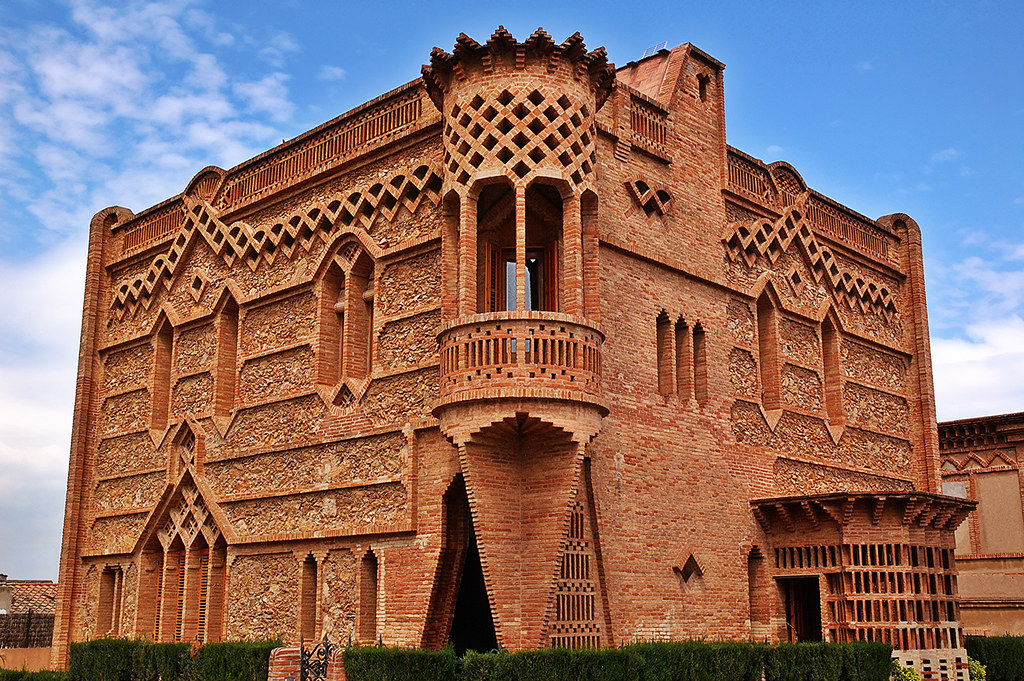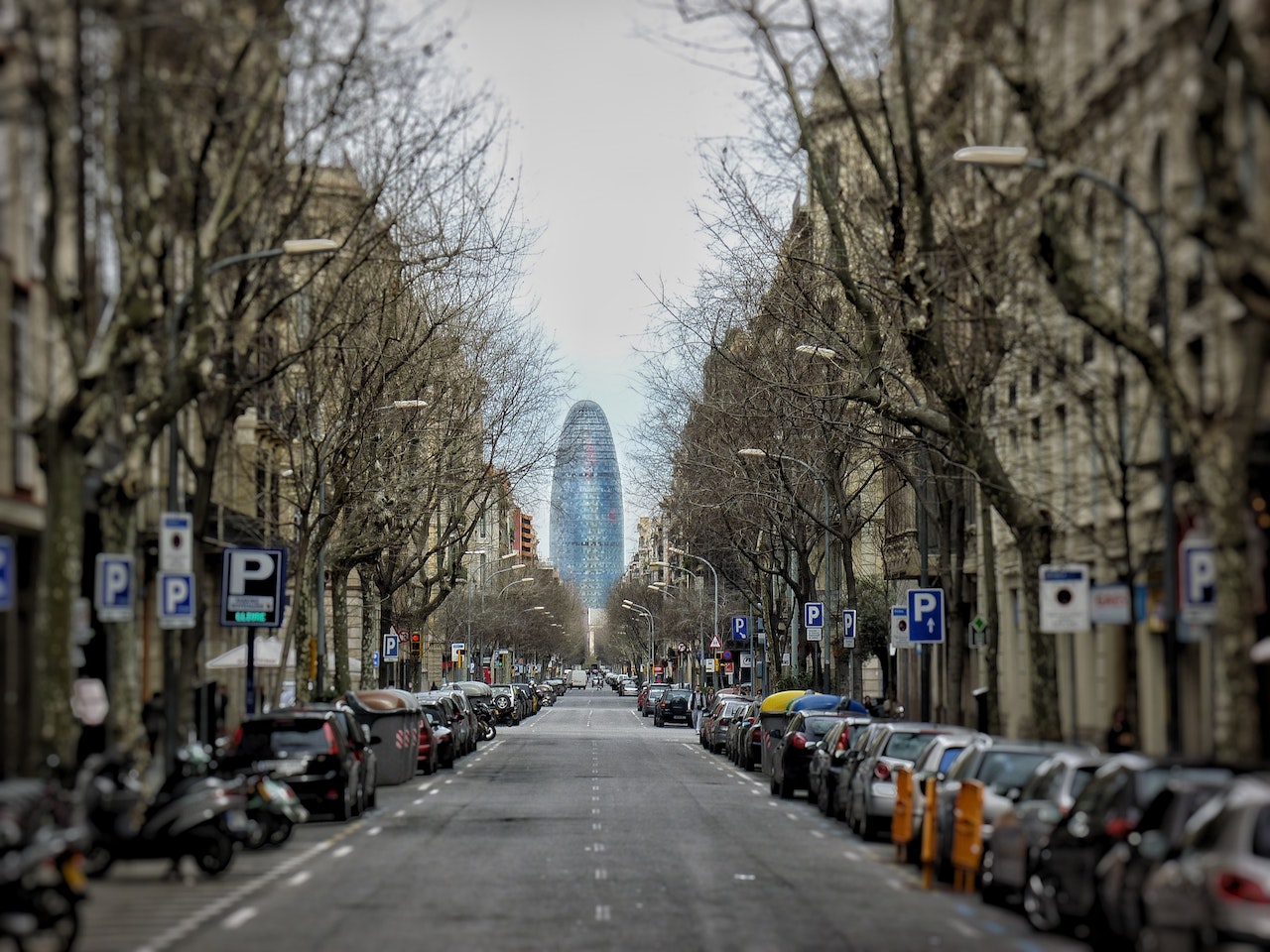Barcelona is a city very much open to tourism. But anyone who knows the city knows that tourists occupy specific areas, those saturated with the visitors who go to the places in the guides. But Barcelona is much more than that, which is why we’re giving you this insiders’ list of alternatives to what everyone already reads about.
TABLE OF CONTENTS
Colonia Güell
You can walk through the Colonia, passing by its most important modernist buildings: the wineries, the convent, the town hall houses and the church. But you won’t be able to see them inside, as many of them are still in use and the houses are still inhabited. The workers’ houses, the collective buildings such as the schools or the hostel were built by important Catalan architects Joan Rubió i Bellver, Francesc Berenguer i Mestres and Josep Canalet, under the careful supervision of the master Gaudí. There is even a church designed by Gaudí himself, in his inimitable style.
The materials used are mainly brick and iron, as is the popular Catalan tradition. Some of the most relevant buildings are: Ca l’Ordal, where the peasants lived, Ca l’Espinal, the most important house in the settlement, the school, the theater, the doctor’s house, the cooperative, the parish center and the convent. There are some incredible buildings to see.

Inside the Colonia there are some bars and restaurants where you can take a break and drink or eat something. In the main square, where the locals used to gather, is the old town bar, the Ateneo Unió, which has a beautiful outdoor terrace and a huge indoor lounge with original decorations. Every Saturday morning the Mercat de Pagès takes place, a 0-km food market that is sold directly by farmers from Baix Llobregat.
Carrer Claudi Güell
El Jardín de Tamarita
This secret garden in the city is an authentic little gem of Barcelona, the gardens of La Tamarita were originally a private garden belonging to the Catalan bourgeoisie. The place consists of two well-differentiated parts, one classic and the other more natural. The entrance houses a small pond lined with fountains and sleeping lions. The calm is immediate and transports you to a less touristy but equally pleasant Barcelona. In the classical part of the gardens, the decorative elements, such as sculptures and fountains, recall the formerly private character of the gardens and give the place a certain intimacy.
The most natural part of the gardens appeals to a certain exoticism, a visual whim that you never tire of. There is also the tower of La Tamarita, headquarters of the Blanquerna Foundation. To talk about this modern oasis, it would suffice to refer to the commonplace, to the evidence that it is aimed at all audiences. We must say that for a walk of any type of company, loving, friendly or familiar, it is an appropriate place. Since, to add to the ambience, there are table tennis tables and a children’s play area.
Passeig de Sant Gervasi, 47
Plaça del Diamant Refuge
Like many other shelters, anti-aircraft bunker 202 in Plaça del Diamant, one of the most beautiful squares in the Gràcia district, was built thanks to a neighborhood commission and the help of the entire population. It was the commission that provided the necessary funds and ordered the planning of the works. Even if the tunnels took shape in the heart of the square, it was thanks to hundreds of volunteers, who day after day dug the earth until they created the shelter.
Construction began in 1937 and was stopped at the end of 1938, and the result was a network of masonry tunnels about 12 meters deep. The Plaça del Diamant shelter had a capacity of around 300 people and had two entrances, one on each side of the square, with different staircases to order and direct the flow of residents to the galleries where they would wait during the bombings. The shelter is simple and functional but the story around it is one that deserves to be told over and over again. We encourage you to visit the Plaça del Diamant refuge if you want to discover and understand a part of Barcelona that you won’t be told about in the guides.
Plaça del Diamant
El Beso de la Muerte
El Beso de la Muerte is the petrification of sadness. One of the most curious pieces in the Poblenou cemetery. Built in 1930, this bizarre and mystifying marble sculpture is both bizarre and captivating, producing mixed reactions from passers-by. The sculpture represents a personification with the wings of death kissing the forehead of a young man, thus elevating him to another world. Some chilling words are inscribed below the sculpture: “So the young heart of him was extinguished. The blood in his veins is running cold. And all the strength of him is gone. His destiny was fulfilled when he fell into the arms of my death. Amen. “
A masterful marble creation, full of texture, that attracts many visitors to the Pobleneou cemetery who come to wonder about the ecstatic or resigned air of the young man. The truly terrifying thing about Kiss of Death isn’t death itself. It makes things easier, no doubt. But what is scary is the sweetness, the possibility that death is not traumatic, the possibility that death is not what it is. And this is not the case when it comes to a person as young as the one depicted in the sculpture.
Poblenou Cemetery, Av. d’Icària, 204
Bosc de Can Ginebreda
This forest of erotic sculptures is located in Girona, a relatively short drive from Barcelona. Xicu Cabanyes, author of the forest, grew up in the countryside and everything indicated that he would continue to live in the countryside. But he showed skill with a knife and with wood that was beyond doubt. He walked into a furniture factory and from there the rest is history. He begins to play with the elements and distinguishes himself from his contemporaries by creating unparalleled works: Cabanyes was already provoking with his erotic sculptures under the Franco regime.
His art can be classified as follows: crosses, waterways, triumph of morbidity, guest artists, living geometry, games of love and death, ligaments, monuments, integrated plastics, leaves, portable volumes. Made of concrete, stone, iron, recycled objects or other. More than fifty sculptures camouflage themselves very well on the 40,000 square meters occupied by the bus. Nudes, phallic forms, buttocks, faces or crosses coexist in nature. And all of them represent the legacy of Xicu Cabanyes; an indisputable and practically imperishable legacy.
Carr. de Mieres
Enjoy these fun and unexpected locations during your next visit to Barcelona and make sure to book a Montjuïc Segway Tour along the way – where you can see some of the classic sites from a different perspective! We’ll be back with more funky locations soon!!





